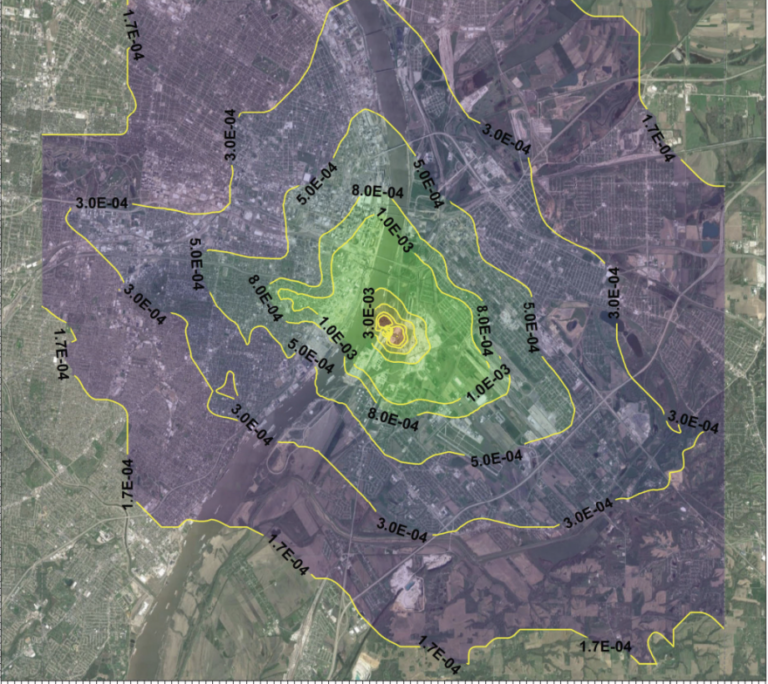SAUGET — llinois Governor J.B. Pritzker recently signed a new law limiting the ways so-called “forever” chemicals can be disposed of in the state. But the sheer volume of these chemicals continues to present significant challenges.
Listen to this story here.
PFAS or per- and polyfluoroalkyl substances are shorthand for a family of over 5,000 toxic chemicals manufactured to be highly resistant to water and heat. Sonya Lunder is a Toxics Policy Advisor with the Sierra Club. She says it’s the durable quality in the chemical structure of PFAS substances that complicates their disposal.
PFAS are commonly employed in all kinds of consumer products, from dental floss to pizza boxes and hundreds more. Lunder adds that their prolific use is adding up to a big problem.
“The hurry to get rid of PFAS is causing state and federal regulators to make really bad decisions,” said Lunder. “And the chemicals are intentionally designed to fight high temperature fires. We’’re very concerned that even in the high temperature of a waste incinerator, they are not broken down.”
JD Dixon is an environmental justice organizer with United Congregations of Metro East. He says the fight ramped up a couple years back when hazardous waste incinerator Veolia ES Technical Solutions received a contract from the Department of Defense to dispose of PFAS-based fire fighting foam.
“That it causes cancer that it literally causes death. I mean, that brought the alarm to the people in the community,” said Dixon. “And that’s what brought them out.”
Sonya Lunder with the Sierra Club says that these chemicals have been linked to a number of adverse health effects, in part because the substances are extremely slow to break down and build up in the environment. She adds that this pervasive quality of PFAS calls into question any benefit of incinerating PFAS in the first place.
“The risk is that the chemicals are passing unchanged through the smokestack and back out into the environment,” said Lunder. “Which would be very dangerous in places like the Veolia incinerator in the East Metro area, where people have been on the receiving end of all types of persistent and toxic waste that was sent to this incinerator over decades.”
Last August, Governor Pritzker originally vetoed a bill that would ban the incineration of PFAS on the basis that the definition of “incineration” was too broad. He approved an amended version this year which carved out thermal oxidation. It’s a type of incineration used at the Veolia facility in Sauget. And it’s not the only definition in the legislation that has advocates like JD Dixon raising their eyebrows.
“And even with what happened with the list that was passed, which was not extensive by far as we wanted it,” said Dixon. “We wanted a more extensive list with more PFAS chemicals on the list because that list was only of roughly a few 100 or 200 PFAS chemicals when there’s 1000s of PFAS chemicals that needed to be incinerated.”
This Governor’s office confirms the new law restricts the family of PFAS banned for incineration to just those that are covered under EPA Toxics Release Inventory–which represents just a fraction of identified chemicals. There are currently only 176 PFAS or PFAS relates substances represented on the EPA’s TRI list.
But Sonya Lunder with the Sierra Club says that the measure is still an important first step.
“But we are concerned that hazardous waste incineration is a really dangerous practice. So It’s a flawed practice,” said Lunder. “So there’s a huge conversation and momentum growing to find safer ways to deal with our most toxic chemical waste.”
And according to a statement to WNIJ from Veolia North America, the Sauget facility made the decision to not accept PFAS related materials several years ago. That comes with the caveat that because so many products contain PFAS, they can’t ensure none of the chemicals are incinerated. Veolia added that the legislation has little to no impact on their operations.
For JD Dixon with United Congregations of Metro East, the decision to only ban the incineration of PFAS substances listed on the Toxics Release Inventory is in line with the kind of environmental injustice that he says has characterized the region for decades now.
“So the St. Louis Community is still in danger of PFAS chemicals being burned at Veolia’s incinerator,” said Dixon.
PFAS are not currently listed as a hazardous substance. But the U.S. EPA did start the process for developing a strategic roadmap for how to deal with them over the next few years. And last month, the EPA announced it is inviting states to apply for money to address PFAS and other emerging contaminants in drinking water. Illinois might be a strong candidate.
Earlier this year, a statewide investigation found that PFAS were detected in over 12% of Illinois community water systems.

